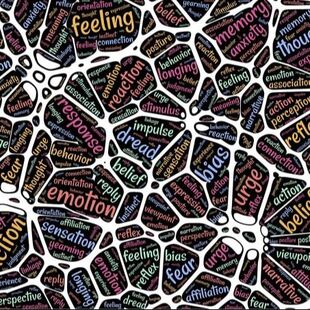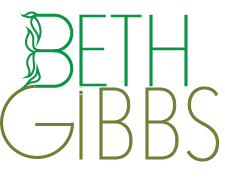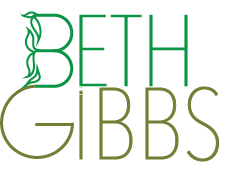ENLIGHTEN UP! a blogSelf-awareness stories: lighting our way to clarity, contentment and resilience in a complicated world.
|
 In my last post, I explored Step 2: Becoming aware of your breath and energy states). In this post, I talk about Steps 3 & 4: Working with the Mind. The Taittiriya Upanishad, the philosophical and spiritual source of this contemporary view of self-awareness has this to say about the mind. “The vital sheath is made of living breath. Within it is contained the mental sheath, Which has the same form, - - - ” —The Upanishads, translation by Eknath Easwaran In the original translation by Eknath Easwaran, the words ‘same form’ were followed by Sanskrit terms whose meanings are hard to accurately translate into English. The best found were: a desire to learn, willingness and diligence to do the work, the courage to persevere, and the honesty to accept and work with the outcomes of what you find – all of it, the good, the bad, the beautiful and the ugly. When we think of the mind we often include the brain but there are significant differences between them. The Brain Hippocrates was the first person (that we know of) to claim that the brain is the seat of consciousness. The brain is a visible, tangible part of the physical body. It weighs about 3.3 lbs. (1.5 kilograms) and makes up about two percent of a human's body weight. The brain contains billions of nerve fibers, which are connected by trillions of synapses. The brain is physical. During an autopsy, the brain can be seen, touched and dissected. The Mind The mind is that intangible part of ourselves consisting of thoughts, emotions, ego, personality, attitudes, beliefs, imagination, perception and judgment. This is how we think, what we think about, how we express our emotions, what we pay attention to, and how we relate to ourselves, others and life in general. The mind is not physical. During an autopsy, the mind cannot be seen, touched or dissected. The tasks of the mind are to think, plan, analyze, judge, create, critique, and warn. Our thoughts and emotions are tools to help us perceive and understand what is happening within and around us. This involves understanding the what and the why of our thoughts, feelings and behavior. Suppressing, repressing, ignoring or trying to rid ourselves of difficult thoughts, emotions or experiences is not helpful. The real goal is to recognize, become aware of, acknowledge and accept what we find with compassion and without judgment in order to perceive and consciously change, re-frame or accept what we find. We can do this by turning our attention to steps three and four of The Nine Steps to Self-Awareness: Step 3. Identify your thoughts, feelings and behaviors. Observe and label them. The WHAT.
Step 4. Explore your beliefs. The WHY.
Here’s an example of how steps 3 and 4 could play out in an everyday situation such as being stuck in traffic on the way to an appointment, a class or a friend’s house for dinner. Step 3. Identify your thoughts, feelings and behaviors. Observe and label them. The WHAT.
Step 4. Explore your beliefs. Once you know the WHAT, ask yourself WHY.
Finding The Pause: Your Practice Working with the mind requires the ability to observe what is going on within and around you ‘in the moment.’ One of the best pieces of advice I’ve heard about how to do this came from Iyanla VanZant in her interview on Oprah Winfrey’s Super Soul Sunday (11/5/17). She said, simply, “Pause, Boo!” When we need to practice paying attention or being ‘in the moment,’ we can always turn to the breath to find the all-important pause that allows us to consciously respond productively to whatever is happening within or around us. Here is one technique to try. It’s awareness of the four parts of breath. Two parts are fairly obvious. We inhale and we exhale. The other two parts are always there but unless we pay attention we may not notice them. They are the pause after we inhale before the exhale and the pause after the exhale before we inhale. Becoming aware of and paying attention to these two pauses can help you, “Pause Boo!” Practicing when you are not in a difficult situation will help you call on this technique when you need it ‘in the moment.’ Instructions
In next month’s post we’ll take our ‘stuck in traffic example’ and explore Step 5. Turn the mind back on itself and Step 6. Take skillful action.
0 Comments
|
Archives
July 2024
AuthorBETH GIBBS started her yoga practice in 1968, four months after her son was born and she’s been practicing ever since. She currently teaches all levels therapeutic yoga classes for adults, and specialty classes for seniors in the Hartford, Connecticut area. Beth is a certified yoga therapist through the International Association of Yoga Therapists and is guest faculty at the Kripalu School of Integrative Yoga Therapy. She writes for the blogs, Yoga for Healthy Aging, and Accessible Yoga. Her master’s degree from Lesley University in Cambridge, MA is in Yoga Therapy and Mind/Body Health. Categories |
|
|
Enlighten Up! a Blog
|
Copyright © 2023 Beth Gibbs

 RSS Feed
RSS Feed
